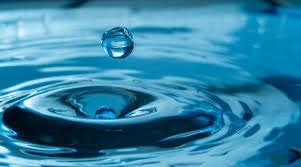Guide to Inspections of High Purity Water Systems

Guide to Inspections of High Purity Water Systems
1. Introduction
High Purity Water (HPW) systems, including Purified Water (PW), Water for Injection (WFI), and Highly Purified Water (HPW), are critical utilities in pharmaceutical manufacturing. Regulatory agencies (FDA, EMA, WHO, MHRA, etc.) routinely inspect these systems because water is a major raw material and a common source of contamination.
2. Key Inspection Focus Areas
Inspectors evaluate whether the water system is designed, operated, and maintained to consistently produce water of the required quality.
A. System Design & Qualification
-
Design Qualification (DQ): Proper selection of materials (e.g., SS 316L, PVDF, PTFE), sloping pipelines, dead-leg prevention (<1.5 pipe diameters).
-
Installation Qualification (IQ): Verification of installation, welding, passivation, and insulation.
-
Operational Qualification (OQ): Validation of alarms, sanitization methods (heat/chemical/ozone), instrumentation.
-
Performance Qualification (PQ): Monitoring water quality at all user points under real operating conditions.
B. Operation and Control
-
Proper SOPs for operation, sanitization, and preventive maintenance.
-
Monitoring of critical parameters:
-
TOC (Total Organic Carbon)
-
Conductivity / Resistivity
-
Microbial counts
-
Endotoxins (for WFI)
-
-
Alarm management and corrective actions.
C. Sampling and Testing
-
Representative sampling at point-of-use (POU).
-
Trending of results to detect early warning signals.
-
Clear alert and action limits for microbiological and chemical tests.
-
Routine use of rapid microbiological methods (where applicable).
D. Maintenance and Sanitization
-
Scheduled heat sanitization (≥80 °C) or chemical sanitization.
-
Evidence of effective biofilm control.
-
Inspection of storage tanks (spray ball coverage, vent filters).
-
Preventive maintenance and calibration of instruments.
E. Documentation and Data Integrity
-
Availability of system drawings, P&IDs, URS, qualification reports.
-
Batch records and logbooks for water use.
-
Electronic data integrity for online instruments (21 CFR Part 11 compliance).
-
Audit trails for water system software.
3. Common Deficiencies Found in Inspections
-
Dead legs >1.5D or poor system design.
-
Lack of trending or inadequate action on excursions.
-
Biofilm formation due to poor sanitization.
-
Incomplete validation (only IQ/OQ done, no PQ).
-
Missing or weak SOPs for maintenance and sampling.
-
No scientific justification for alert/action limits.
-
Inadequate training of personnel handling the system.
4. Inspector’s Approach
-
Walkthrough of the system from pretreatment to distribution.
-
Review of critical parameters and recent deviations.
-
Checking calibration/maintenance records.
-
Asking operators about sampling and sanitization practices.
-
Correlation of water system quality with product quality complaints or OOS.
5. Best Practices for Compliance
-
Maintain updated User Requirement Specifications (URS) and system drawings.
-
Conduct routine risk assessments (per ICH Q9).
-
Use continuous monitoring for conductivity/TOC and periodic microbial/endotoxin testing.
-
Document everything — “If it isn’t documented, it didn’t happen.”
-
Implement a robust change control process for modifications.
-
Trend data and act before limits are breached.
✅ Conclusion:
Regulatory inspections of high purity water systems focus heavily on system design, validation, operation, maintenance, monitoring, and data integrity. Companies should demonstrate a state of control with scientific justification for every practice.
🎓 Discover one of the best Complete Pharmaceutical Quality Assurance Course available —click below to explore the course that’s shaping future in QA Course skills.

